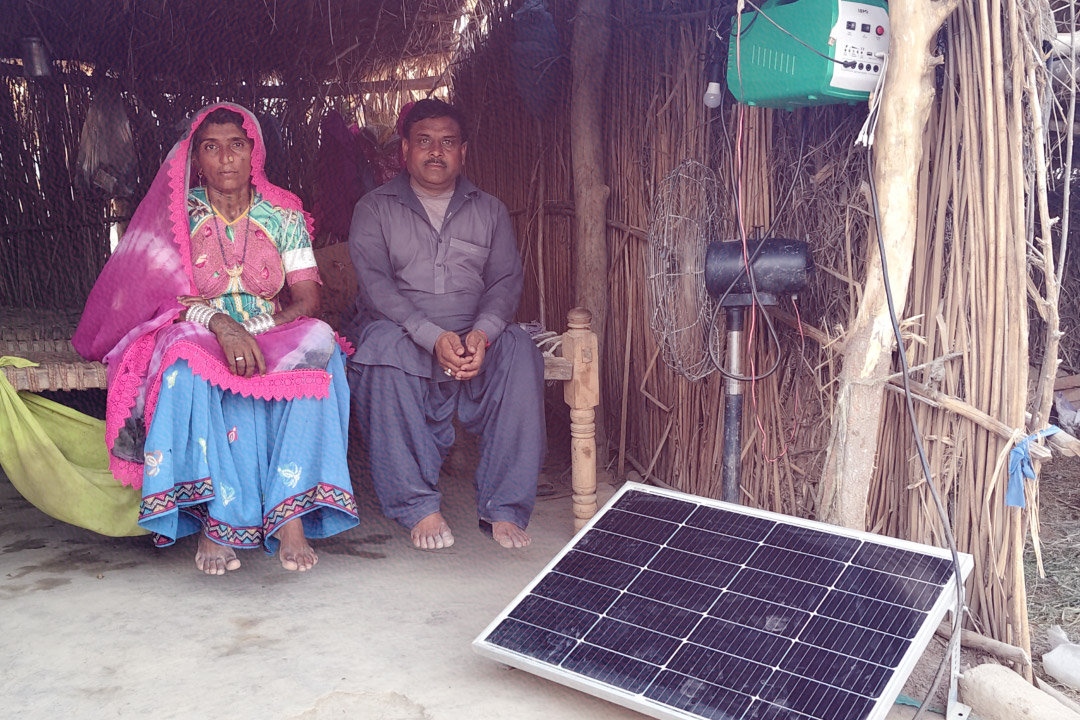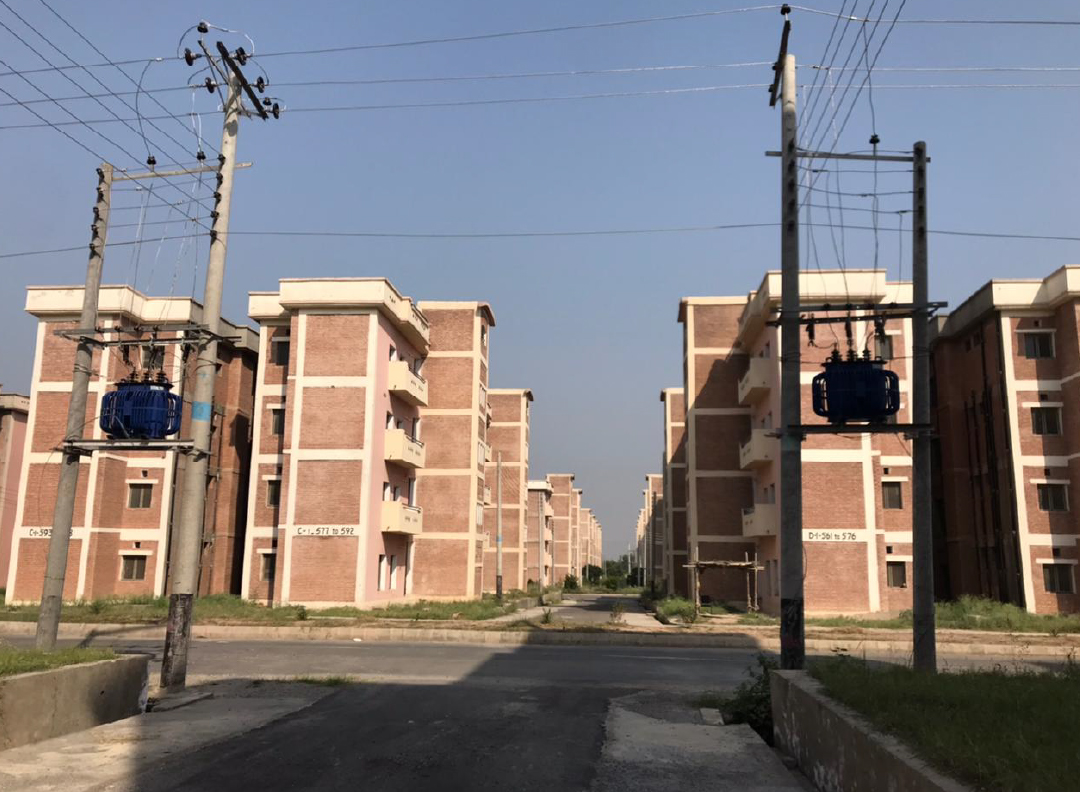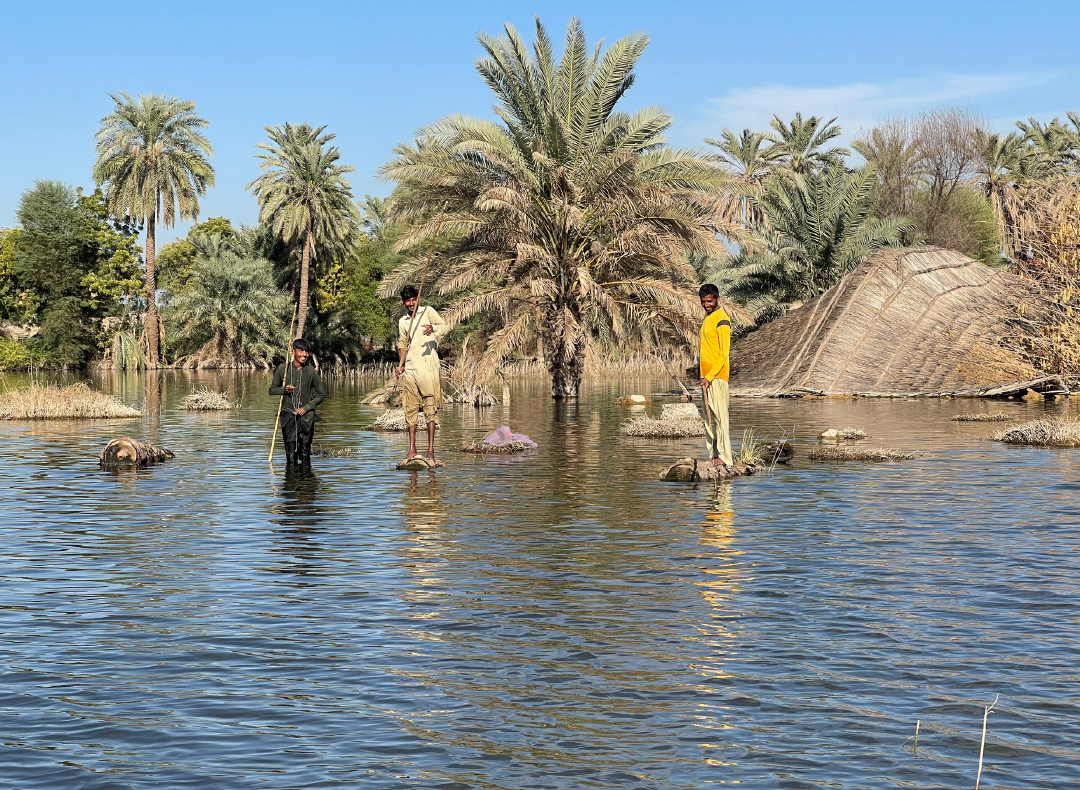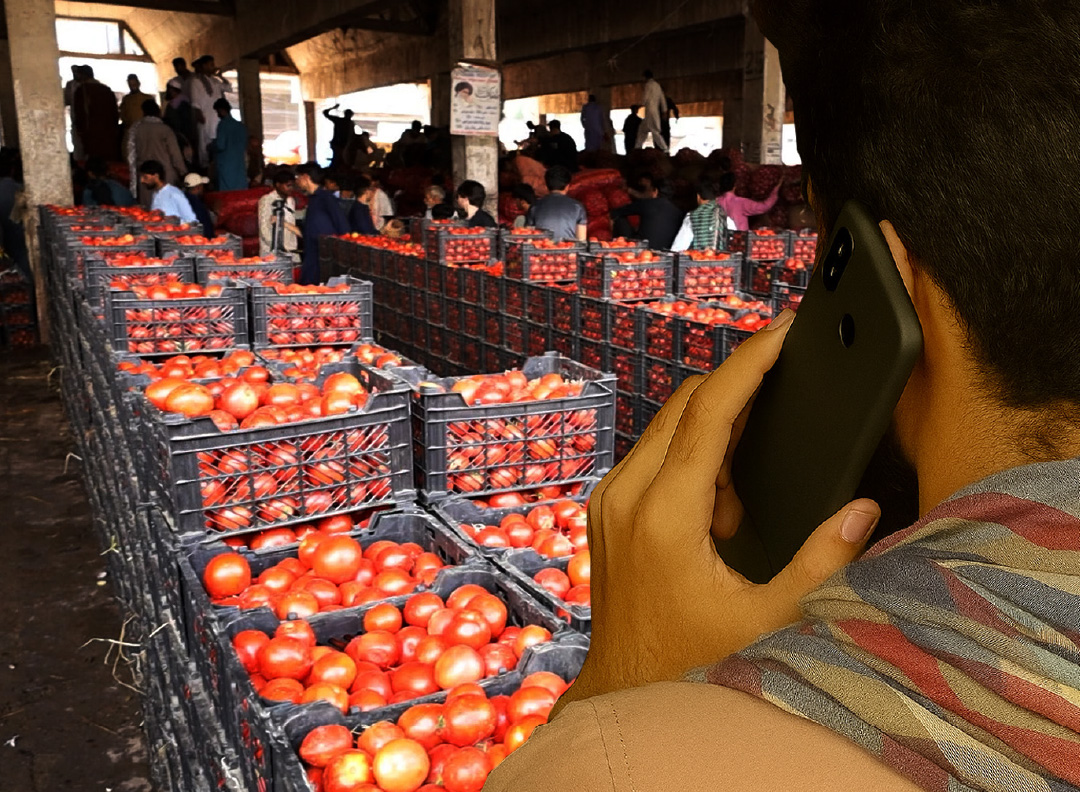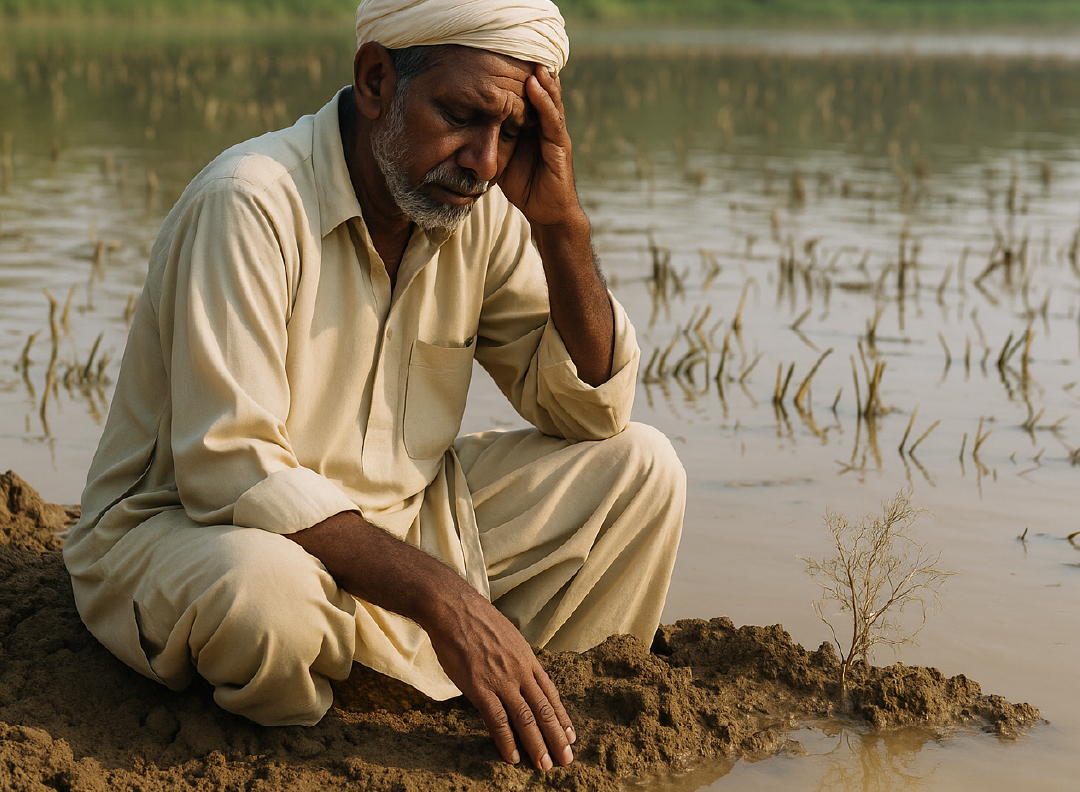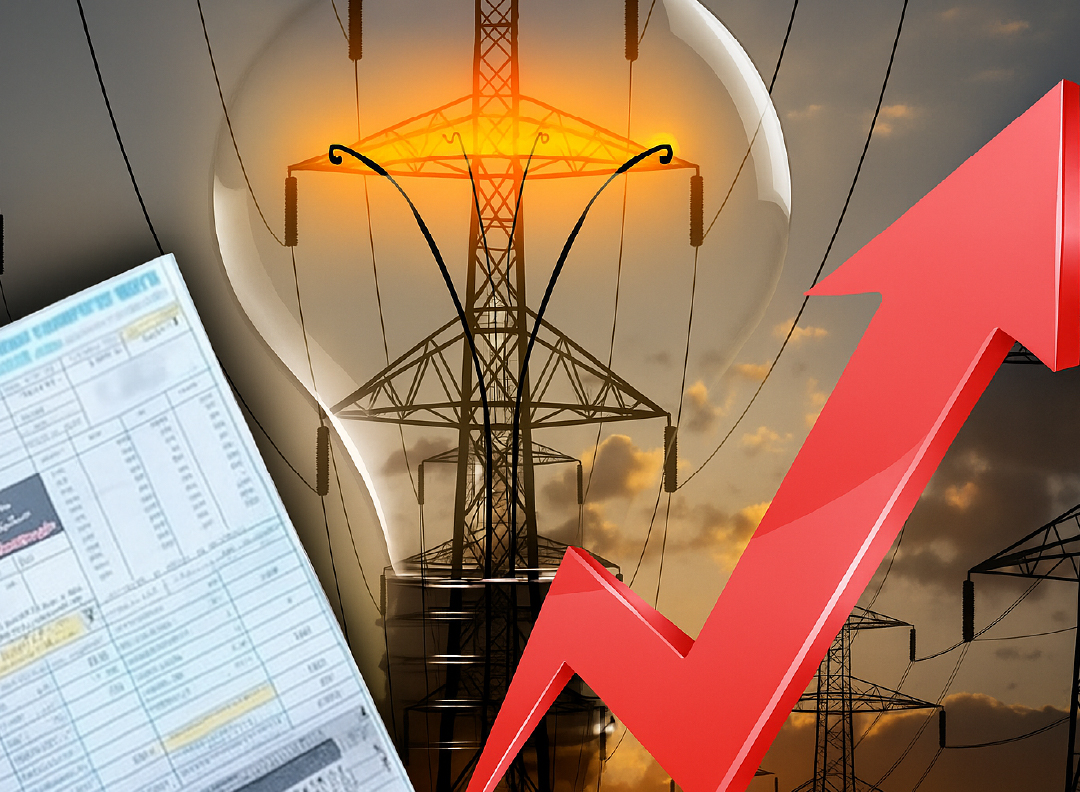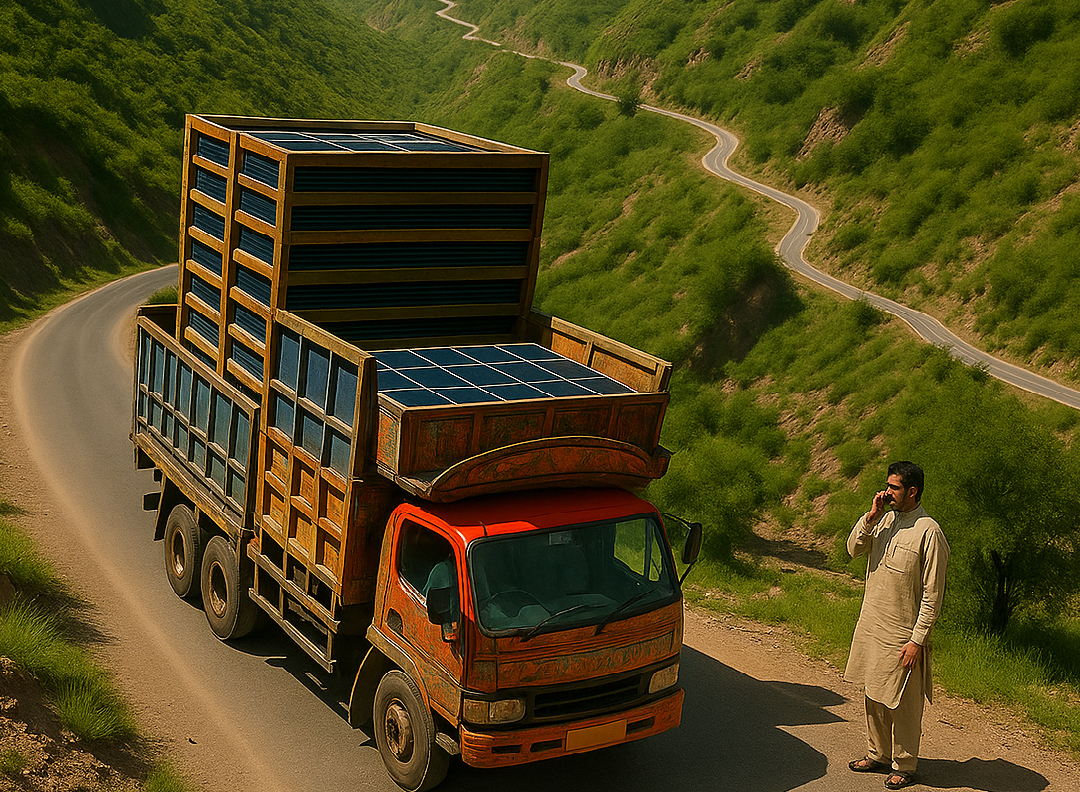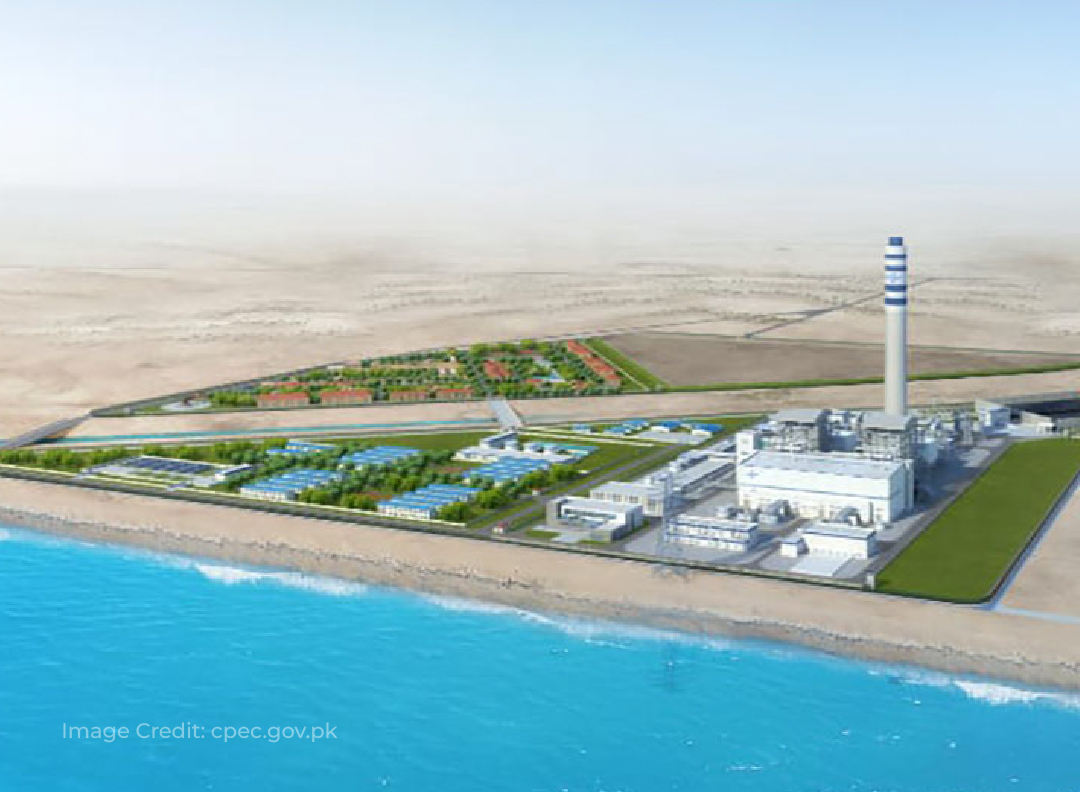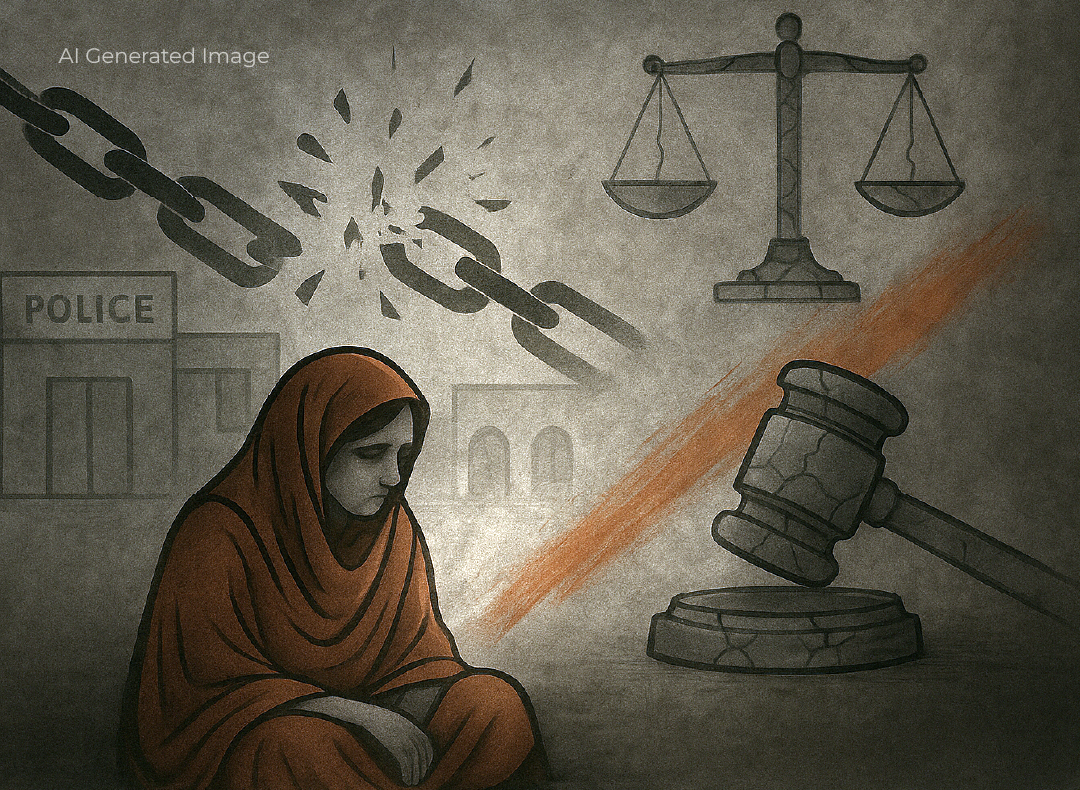Forty-year-old Walhi Kolhi is sitting on a charpoy in a hut made of wood, thatch and grass. Next to the charpoy, there is a small trunk where she has put some chips, eatables and snacks for children and she calls it her shop.
Walhi, who talks shyly to her husband Ramji Kolhi, has a constant smile on her face. She says that earlier she too used to work in the fields, but now only Ramji goes to work, who gets Rs400 to Rs600 per day.
The couple live in a house consisting of a mud room and a hut with a thatched roof in Bheo Farm near Tando Soomro, a model village in Tando Allahyar. They have only one daughter who is married. The couple is very happy to have solar energy.
“We thought that electricity and a fan in the house were probably not our destiny.”
Walhi Kolhi used to receive a stipend from the Benazir Income Support Program (BISP) but she has not received it for the last two years. Twenty days ago, she received a solar kit, which includes a pedestal fan, three bulbs and a battery system.
“There was no electricity in the house. At night, my husband would light the bulb with a motorcycle battery and turn it off after a while. They sleep under the open sky at night but spending the day in the heat was torture,” she remembers.
The government has provided the solar kit for Rs6,000, which she (Walhi) deposited in the Sindh Bank under the guidance of the non-governmental organization, National Rural Support Programme (NRSP).
The NGO workers brought the solar kit home. An electrician who was accompanying them fitted the solar plate and equipment and turned on the fan.
According to the authorities, the solar home system has a two-year insurance and if it breaks down, it will be refunded.
An agreement has been signed with five NGOs for the distribution of solar kits, including the NRSP, Health and Nutritional Society (HANDS), Sindh
Agricultural and Forestry Workers Coordinating Organization (Safwco), Sindh Rural Support Organization (SRSO) and Thardeep Rural Development Program (TRDP).
The original price (head price) of each kit is Rs42,000 and about R 17,000 is tax on it. The user has to deposit a total of Rs6,000, which is difficult for some families. The provincial government tried to get the duty and sales tax waived off from the FBR but it did not happen.
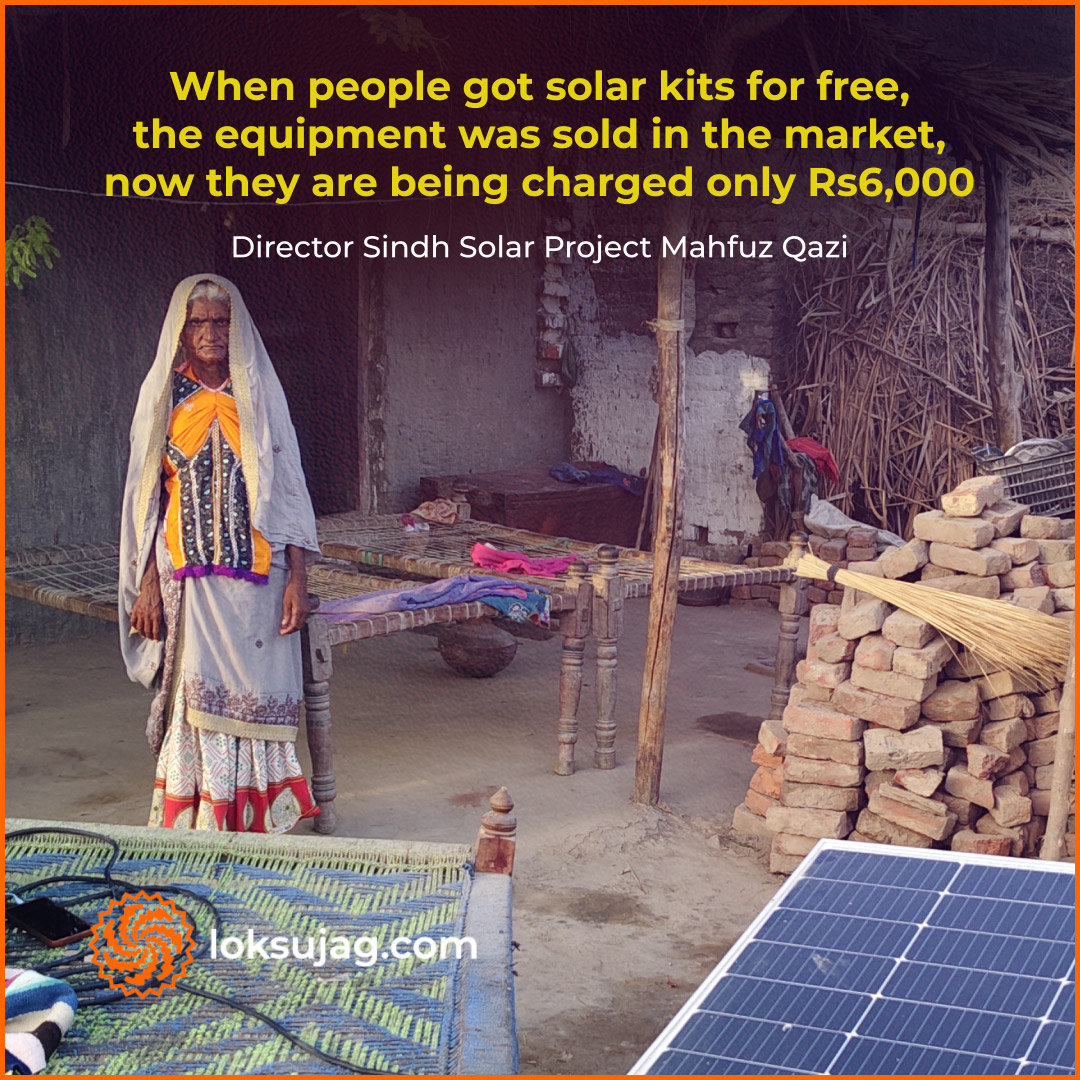
36,000 poor families in 30 districts have received solar kits
Under the Sindh Solar Energy Project, solar kits have been provided to 36,000 poor households in 30 districts. According to the official website of the World Bank, in collaboration with the Department of Energy, it launched the Sindh Solar Energy Project in 2020 with the aim of promoting green energy. The project has four components, including the establishment of a grid-connected solar park, installation of panels on government buildings for net-metering, distribution of solar kits (solar home systems) among poor communities and training of manpower.
The bank has approved a loan of USD 100 million for the project, which includes the cost of 200,000 solar home systems (SHS/kits). However, the Sindh government has borne the operational costs of distributing the kits.
Sindh Solar Project Director Engineer Mahfuz Qazi says initially it was decided that the government would provide a 40pc subsidy to poor households on solar kits and the remaining 60pc would be collected in installments. Under this scheme, only 322 kits were distributed in 2022.
He says then there was a flood in the region and this process was stopped. Due to the increase in poverty, it was decided to provide solar kits for free but government goods (kits) started being sold in the market. After this, the Sindh government redesigned the project. Under the Solar Policy 2024, these 200,000 home solar kits will be distributed in the first phase. The subsidy amount has been increased to 80pc and 20 percent (Rs6,000) will be given to the eligible households so that they can take ownership of these kits.
According to the Sindh Energy Department, the distribution of 200,000 solar kits under the World Bank project started in March and 36,000 families have received the kits in about three months.
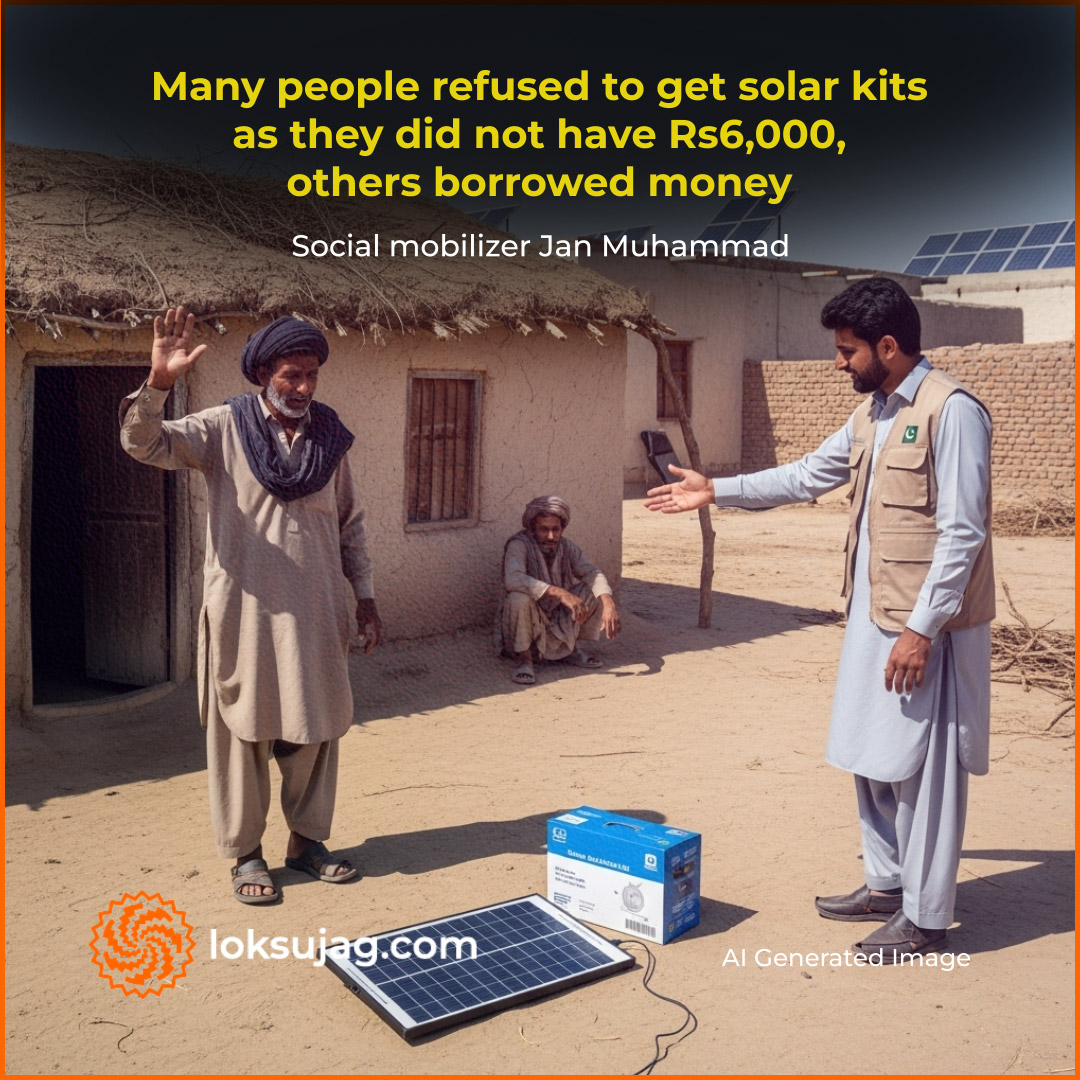
Solarisation of homes—a life-changing experience
Wali Kolhi says, “It's good that someone remembered the suffering of the poor and provided us with a solar system. Now the house is bright, the fan is running day and night, we are sitting peacefully; otherwise, our whole life would have been wasted in the dark”.
Fifty-five years old Bawri Kolhi at Bhaiya Farm also received a solar kit. She is sitting on the ground in her hut, watching her five-year-old grandson Hamir, who is busy playing games on a smartphone charged with a lithium battery. Bawri Kolhi’s sons and daughters are married. She gets a stipend from the Benazir Income Support Programme (BISP) and lives with her son. She is happy that the house has electricity and now her children do not have to go to any shop to charge their phones.
In Sindh, in the first phase, solar kits are being provided to the female heads of eligible households based on the BISP survey.
Jan Muhammad, a social mobilizer of NRSP, says that his organisation has to install 6,600 kits (solar systems) in Tando Allahyar district by July. Almost the same number of kits is being provided to the poor in each district.
“We have the union council-wise lists of the Benazir Income Support Survey. We get the system installed in the concerned households after signing the consent form by the family head and deposit of Rs6,000 in the bank.”
Jan Muhammad says he found several people who refused to take the solar kits simply because they did not have Rs6,000 in a lump sum with them. Some borrowed money to get the kit installed while some households had already installed their solar panels.
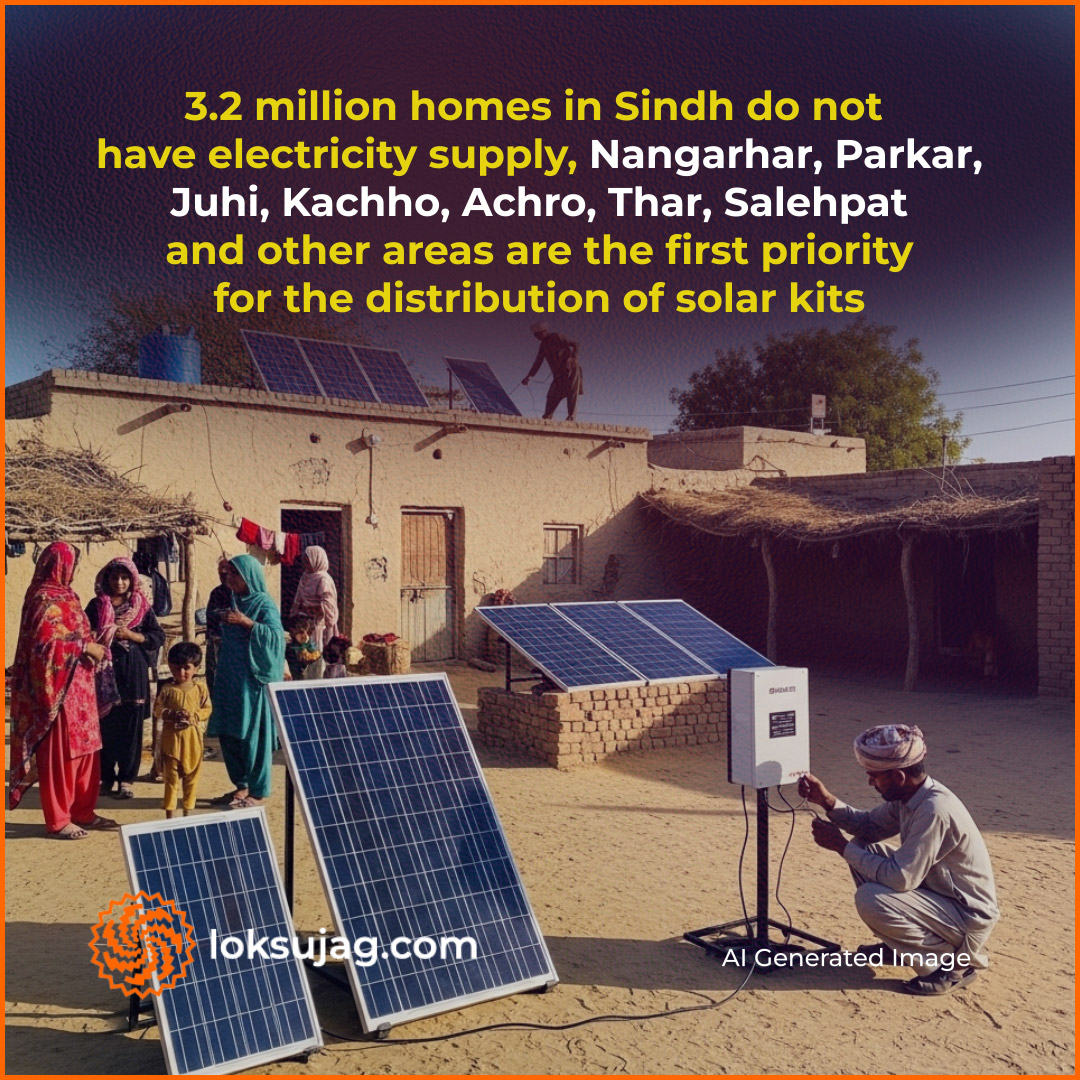
Distribution of 200,000 solar kits to be completed by July
According to the Energy Department, there are 3.2m households in Sindh that do not have electricity. More details are being obtained from Hyderabad Electric Supply Company, Sukkur Electric Supply Company and Karachi Electric.
The project director says that seven districts of Karachi are also included in the first phase. However, Nangarparkar in Tharparkar district, Juhi and Kachho in Dadu, while Sanghar, Khairpur, Miras and Sukkur, Achro, Thar, Salehpat are a priority along with other areas where there is no electricity system.
The distribution plan of 200,000 kits funded by the World Bank will be completed in July 2025. But, the Sindh government has announced an extension of this programme, under which Rs5bn will be spent on more solar kits in the new financial year from the annual development programme.
Engineer Qazi says that 250,000 more kits would arrive in August, which will be distributed under the current standards and procedures.
“Forty-eight percent of Sindh's population lives in villages where there is 18-hour long electricity loadshedding. Therefore, the provincial government wants all households in the province using less than 300 units of electricity to be provided with solar kits.”
The government solar kit (SHS) includes an 80-volt solar panel, three 25-volt bulbs, a solar pedestal fan and a 24-ampere DC battery. This lithium battery, which has a five-year warranty, is capable of continuously supplying power to the system for eight hours on a single charge, which also includes a switch button for charging mobile phones and laptops.
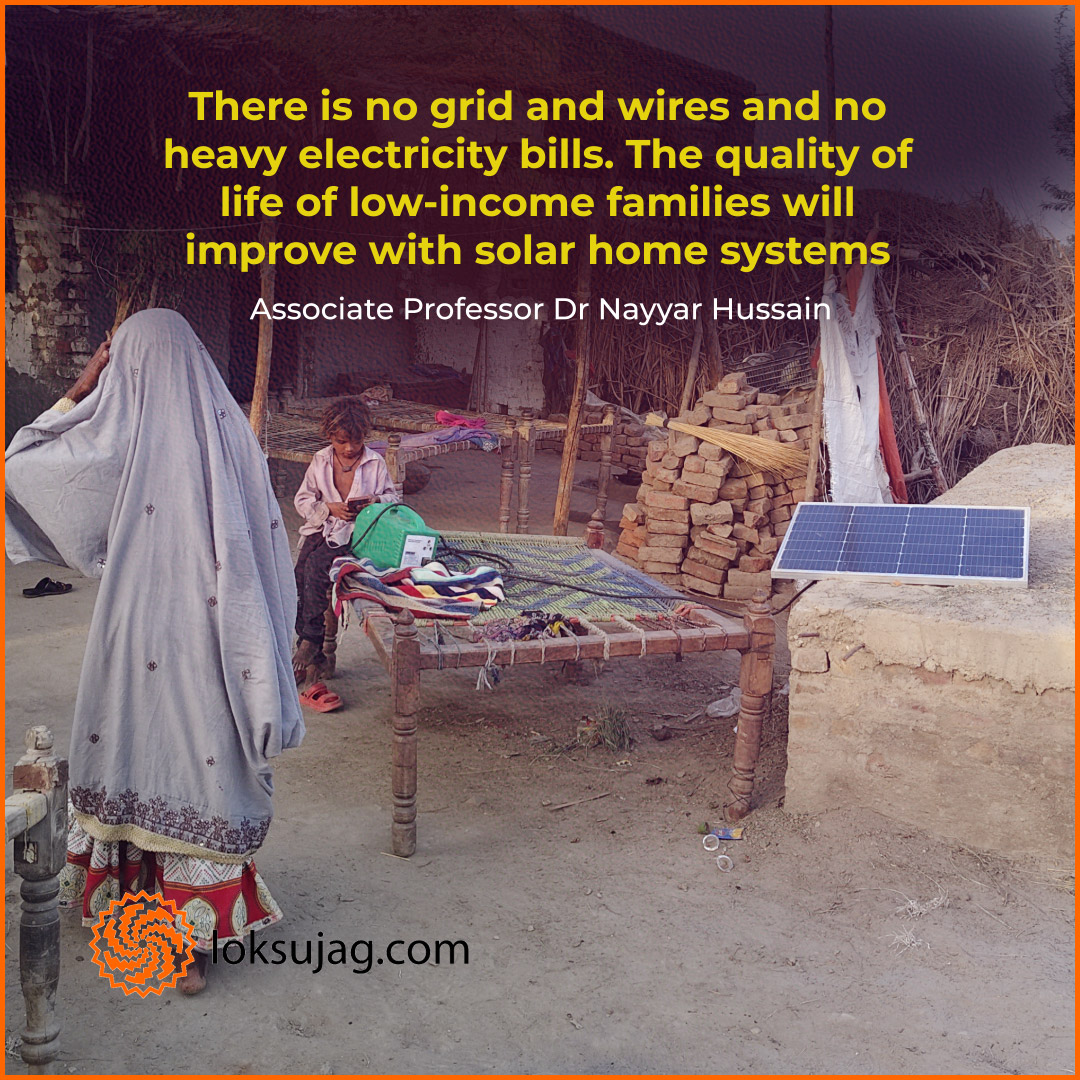
2.5m people to benefit from solar kits
As many as 2.52m people will benefit directly from the distribution of 450,000 kits in Sindh.
According to Engineer Qazi, this solar system can be moved from one place to another without hesitation. Those who move to work in villages or those who have rented houses in the city can take it with them anywhere. This project will make people’s lives easier.
Dr Nayyar Hussain, associate professor of Electrical Engineering at Mehran University, Jamshoro, says that under the solar project, more than 3,000 people will be given technical training, who will train more people. This will provide employment to thousands of people.
“The solar energy will reduce the use of fossil fuels, which will protect the environment from damage to some extent. There are no grid station and transmission charges or any tangled wires. Low-income households will be spared from high electricity bills, which will stabilize their financial situation and improve their quality of life,” he adds.
Zeenia Shaukat, director of The Knowledge Forum, an organisation working on green energy and climate justice, welcomes solar projects. However, she believes that sustainable planning is needed for their implementation.
“The life of a lithium battery and plate, etc. included in the Sindh Solar Project kits is said to be five years, after which we do not know where the solar waste and garbage will go. A clear policy for solar equipment disposal will have to be introduced in the country,” she suggests.
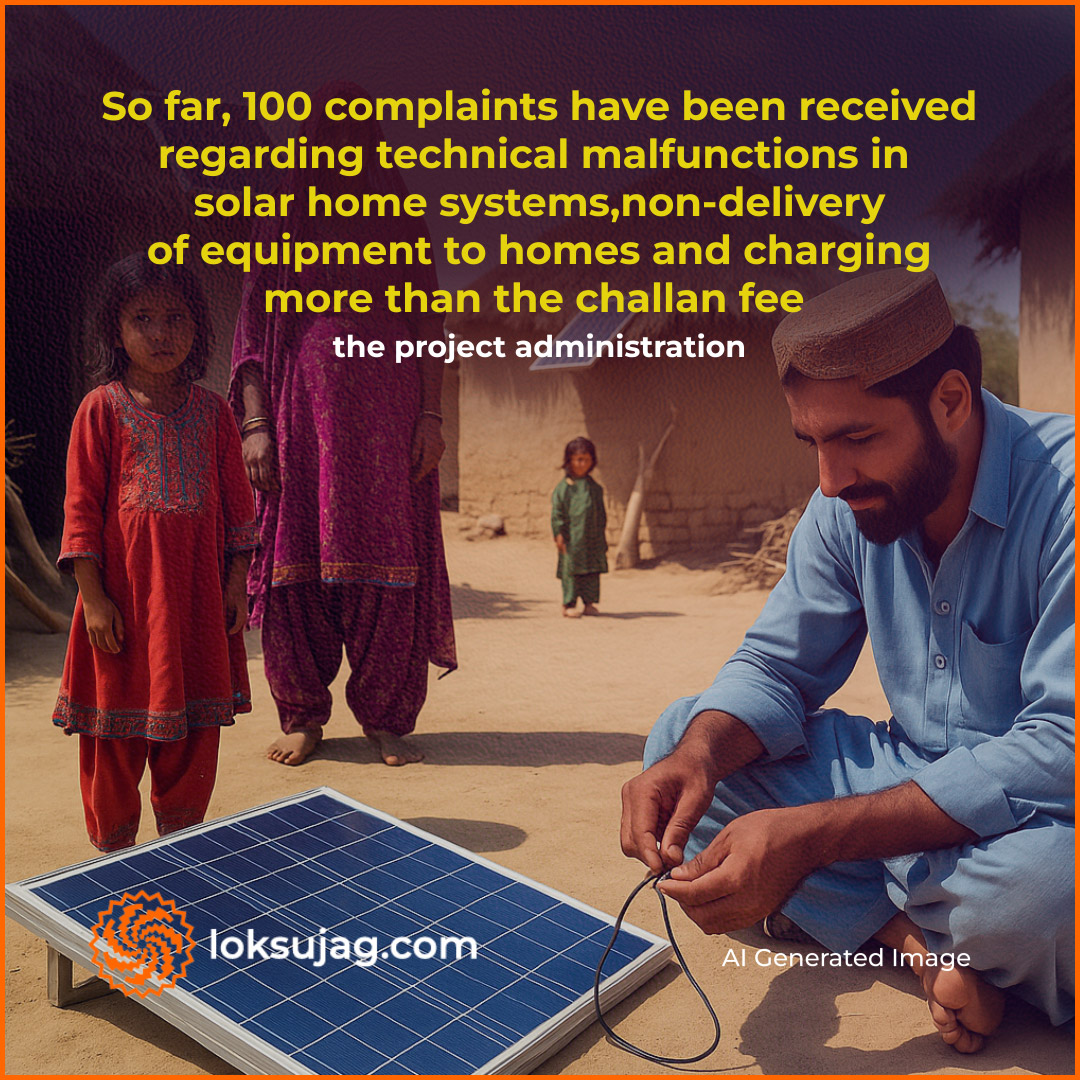
Concerns at lack of awareness about precautions
The project management says that a robotic call system has been introduced to receive complaints related to solar kits where about 100 complaints have been received so far. About 30 systems were replaced on complaints of technical malfunction. There were some complaints against HANDS in Hyderabad that they did not deliver the equipment to their homes as per the agreement. The customers were called to the office and handed over the kits, for which they had to spend additional money and time.
Complaints have also been received against some NGOs whose social mobilizers or representatives have collected more than the stipulated challan fee (Rs6,000). These complaints are present in the computerised records.
Zeenia Shaukat expresses the fear that people in the huts are charging their mobile phones while keeping the battery on their feet, which may pose a danger to them. This needs to be thought about so that people are informed about precautionary measures along with provision of solar kits.
Published on 2 Jul 2025
